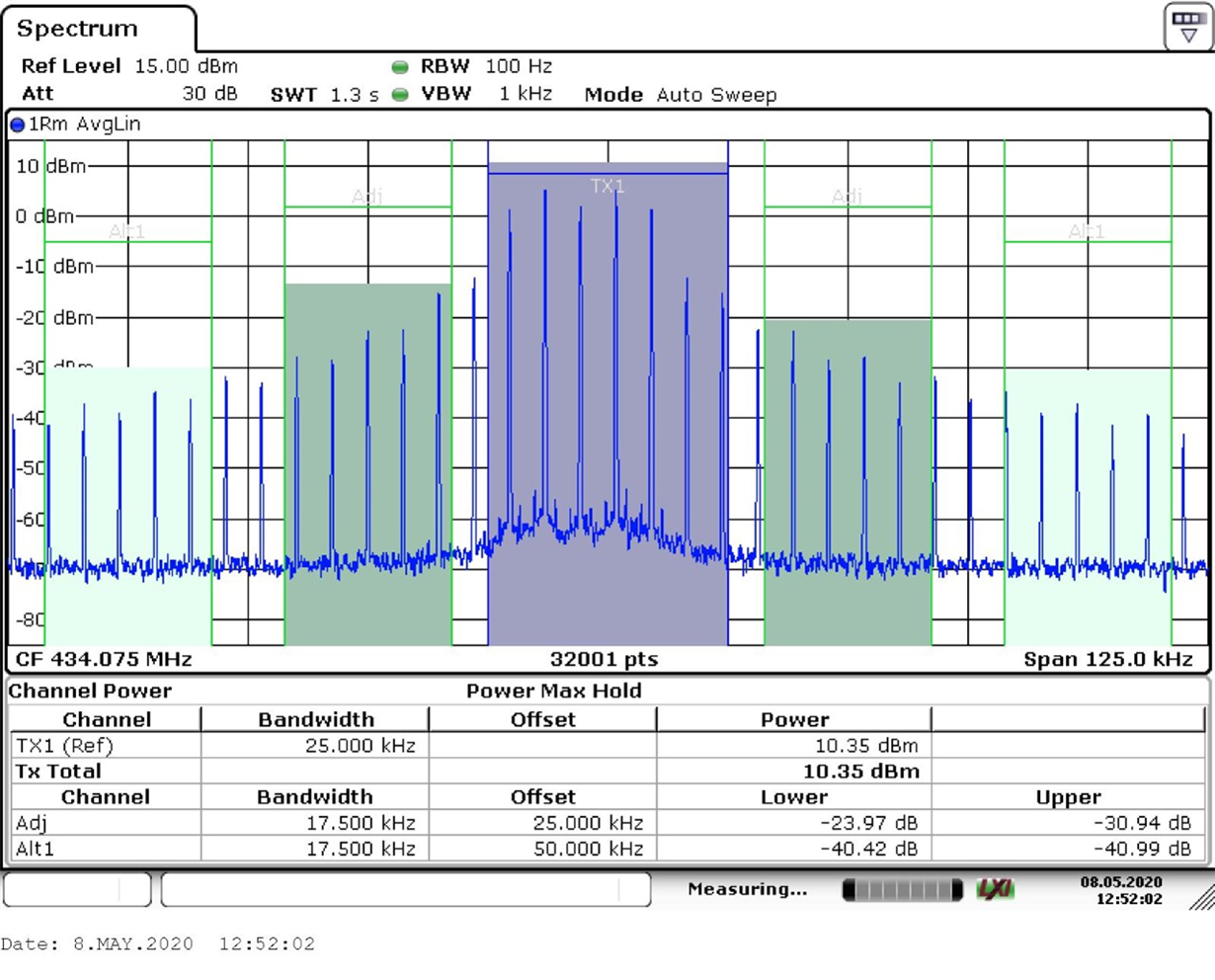Hi,
We have designed an RF beacon using the CC110L device which gives audible 'beeps' on our hand held receiver (an off the shelf item). It has been tested to ETSI EN 300 220-1 and has failed the Adjacent Channel Power test when in it's normal mode of operation, which I understand equates to the D-M3 test signal.
The test results are
The test limit for the adjacent channel is -37dBm.
The balun and filter components are as per the 433 MHz reference design and the 26 MHz crystal meets the datasheet requirements. The antenna is a length of wire cut to one quarter wavelength.
We previously attempted to provide a better match to the antenna, but did not see any performance benefits, so the design was left as per the reference design.
The transmitter is set up as follows
- Base Frequency - 434.074951
- Modulation Format - 2-FSK.
- Data rate - 7.38907kHz
- Transmitted Data - 10101010101010.....10
- TX Power - 10dBm
- TX Pattern - ~100ms on, ~100ms off, ~100ms on, ~2000ms off, repeat
I am looking for any advice on how to fix this issue. Are there any adjustments available within the CC110L that can reduce the Occupied Channel Width from 25kHz to <20kHz, where the test limits are higher?
Would a different modulation scheme help?
Unfortunately, with the spectrum analyser I have, I have been unable to re-create the trace shown above. For example, with the RBW at 100Hz (as per the test spec), the analyser is only happy with the sweep time set at 50 seconds. The sweep time at the test house appears to be only 1.3 seconds.
Any advice would be greatly appreciated.
Thanks
Paul


